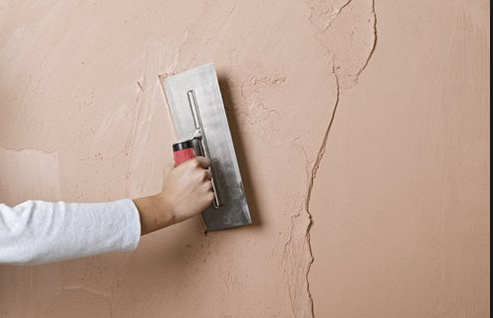Why Plastering is the Key to a Durable and Durable Wall
Why Plastering is the Key to a Durable and Durable Wall
Blog Article
Trick Tips and Devices for Effective Gluing in Your Home Renovation Endeavors
Attaining a remarkable plaster surface in your home improvement jobs requires a blend of the right devices and tested methods. Recognizing the subtleties of blending plaster and using it in thin layers can significantly affect the last end result.
Crucial Smudging Tools
The necessary devices include a variety of carries out created to assist in the smudging process effectively and efficiently. Key elements consist of a hawk, which is a level, square device utilized to hold the plaster while using it to surface areas.

Additionally, a mixing container is essential for preparing plaster, making certain the ideal consistency before application (Plastering). With each other, these important plastering tools make it possible for both professionals and Do it yourself fanatics to attain high-grade results in their smudging tasks.
Surface Area Prep Work Techniques
Correctly preparing the surface before smudging is vital for guaranteeing adhesion and accomplishing a remarkable surface. The primary step entails cleaning up the surface area to eliminate any kind of dirt, grease, or old paint that might hinder the plaster's capability to bond effectively. A complete wash with an ideal cleansing option is recommended, followed by washing and enabling the surface area to completely dry completely.
Following, evaluate the surface area for any kind of fractures or imperfections. These must be loaded with an ideal filler compound and allowed to heal according to the maker's directions. For permeable surface areas, using a guide is important to boost and produce a consistent appearance adhesion.
Additionally, it is important to make sure that the surface is steady and structurally audio. Any type of loose products, such as flaking paint or harmed drywall, must be fixed or removed. If collaborating with stonework surface areas, think about utilizing a scratch coat to enhance grasp.
Mixing Plaster Like a Pro

Utilizing a tidy blending container, pour the water initially, then slowly include the plaster powder while stirring constantly - Plastering. This method assists to stop clumping and guarantees an even circulation of materials. A mechanical mixer can be beneficial, saving and giving regular results time. Go for a creamy, lump-free uniformity that permits simple spreading yet is thick enough to hold its shape without running.
When mixed, enable the plaster to relax for a couple of mins to enable the gypsum crystals to hydrate fully. This resting period enhances workability and lowers the threat of breaking during application. By following these actions, you can blend plaster like a pro, setting the foundation for an effective smudging project in your home enhancement endeavors.
Application Techniques for Smooth Finishes
With the plaster mixture prepared to the ideal uniformity, the next action involves selecting appropriate application techniques to achieve a smooth finish. The selection of application devices substantially affects the final appearance of the plastered surface area. For ideal results, a stainless steel trowel is commonly advised. This tool enables a penalty, also circulation of plaster across the surface while reducing trowel marks - Plastering.
Begin by using a charitable amount of plaster to the surface utilizing the trowel, ensuring it sticks well. Utilize a methodical strategy, working from the lower upward. When the first layer is used, utilize a sweeping movement to smooth the surface, applying even stress. In areas that call for more precise focus, take into consideration making use of a float, which can help eliminate any kind of flaws and produce an uniform structure.
For the last touches, a wet sponge can be used to refine the surface area further. Lightly haze the plaster with water and delicately rub the surface to attain a sleek effect. Always keep in mind to operate in small areas to keep click this link control over the application process, guaranteeing a smooth, professional finish throughout your plastering job.
Usual Errors to Stay Clear Of
When beginning on a smudging project, avoiding common blunders is vital for accomplishing a remarkable finish. Ensure that all dirt, grease, and loosened materials are removed before using plaster.
One more typical blunder is applying plaster as well thickly. Thick layers can fracture as they dry out, jeopardizing the integrity of the surface. Rather, choose several thin layers, permitting each coat to dry entirely before using the following.
In addition, poor blending techniques can lead to irregular structure and workability. Always adhere to the manufacturer's guidelines for blending proportions and thoroughly blend the plaster to accomplish an uniform uniformity.

Timing also plays a vital duty; plaster must be applied while the substrate is damp to improve attachment. Lastly, avoid utilizing inappropriate devices. Top quality trowels and drifts can make a substantial distinction in accomplishing a smooth finish. By avoiding these common risks, you can boost the high quality and durability of your plastering job, causing a much more expert lead to your home improvement undertakings.
Final Thought
Efficient gluing requires a thorough understanding of crucial tools and techniques. By using correct tools, guaranteeing thorough surface area prep work, and sticking to advised blending proportions, optimum outcomes can be attained. Employing suitable application techniques further boosts the surface, while understanding of common errors can prevent problems. Mastery of these aspects not just adds to the aesthetic allure of an area however additionally ensures longevity and durability in gluing jobs, making them indispensable to effective home improvement undertakings.
A float why not look here is an additional essential tool, investigate this site which assists in leveling the plaster and accomplishing a consistent surface.

By following these steps, you can blend plaster like a pro, setting the foundation for a successful smudging job in your home improvement undertakings.
Gently haze the plaster with water and gently massage the surface area to accomplish a refined result.
Report this page